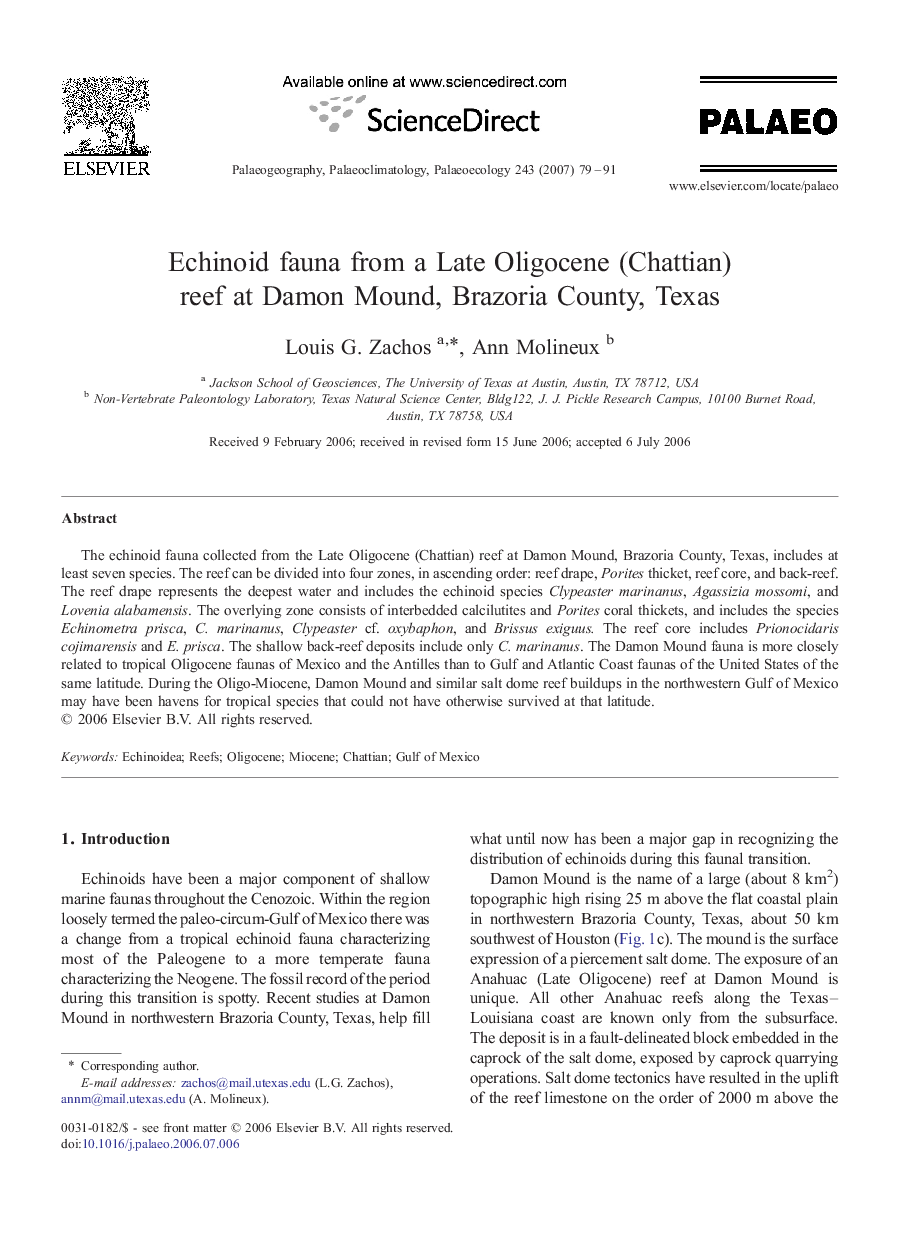| Article ID | Journal | Published Year | Pages | File Type |
|---|---|---|---|---|
| 4468988 | Palaeogeography, Palaeoclimatology, Palaeoecology | 2007 | 13 Pages |
The echinoid fauna collected from the Late Oligocene (Chattian) reef at Damon Mound, Brazoria County, Texas, includes at least seven species. The reef can be divided into four zones, in ascending order: reef drape, Porites thicket, reef core, and back-reef. The reef drape represents the deepest water and includes the echinoid species Clypeaster marinanus, Agassizia mossomi, and Lovenia alabamensis. The overlying zone consists of interbedded calcilutites and Porites coral thickets, and includes the species Echinometra prisca, C. marinanus, Clypeaster cf. oxybaphon, and Brissus exiguus. The reef core includes Prionocidaris cojimarensis and E. prisca. The shallow back-reef deposits include only C. marinanus. The Damon Mound fauna is more closely related to tropical Oligocene faunas of Mexico and the Antilles than to Gulf and Atlantic Coast faunas of the United States of the same latitude. During the Oligo-Miocene, Damon Mound and similar salt dome reef buildups in the northwestern Gulf of Mexico may have been havens for tropical species that could not have otherwise survived at that latitude.
